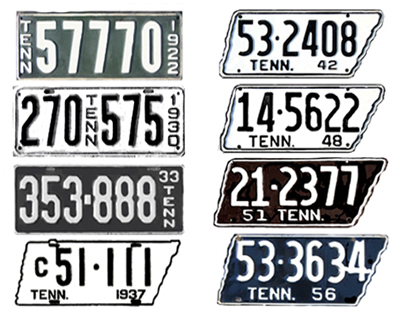Old newspapers fascinate me, even perusing events that were casually reported in the paper and then rapidly forgotten by readers. The Dec. 14, 1926 Johnson City Staff-News carried three interesting transportation news items.
The first one exclaimed, “Two Autos and Wagon Damaged in Collision.” The triple wreck occurred on the previous day near Okolona just south of town.
T.C. Runyon, driving a Studebaker toward Johnson City, attempted to pass a covered wagon, driven by J.H. Gouge and in doing so encountered a Ford roadster owned by Roy Shoun going in the opposite direction. The driver of the Studebaker erroneously thought he could navigate around the wagon and still leave enough room for the Ford to pass.
Due to the narrowness of the road, Runyon was forced to strike the slow-moving wagon on the right to avoid a head on collision with the speeding Ford. Simultaneously, Shoun steered his automobile to his right and down a seven-foot embankment. Fortunately, no parties were injured. The wagon experienced breakage to one wheel, the tongue and several other parts. The cars were only slightly damaged.
Another newsy item in that same paper carried the title, “Officers Tag One ‘Foreign’ Car Every Twelve Minutes in Test Period of Johnson City.”
The city instigated a program to estimate the number of visitors driving through the city. On a designated Saturday afternoon, traffic officers stood at predetermined locations to place a welcome tag on the car of every visitor motoring through the city. They averaged one “foreign automobile,” as they called it, every 12 minutes. The word “foreign” was not defined in the article.”
The tags were attached to vehicles when they came to a stop at specified intersections. It was acknowledged that many cars were overlooked because they drove through the city at unmanned locations.
Final results revealed that southbound traffic was the heaviest ever recorded in the city at that time of the year. Opening of the north and south highways had much to do with increased traffic flow through the region. The Appalachian Scenic Highway that cut through the area was recognized as the greatest arterial road from Canada to Florida.
A third item in the newspaper stated, “Few Motor Tags Have Been Sold – Less Than One Hundred Secured From Clerk.”

With only about 60 new motor license tags for 1927 sold in Johnson City on opening day of the sale, County Court clerk, Jess G. Smith stated that total sales to date were fewer than 100 and those were mostly for new cars. The deadline was Feb. 1, after which a penalty was to be assessed.
Tags were initially sold only at county seats, but Mr. Smith offered concessions by making several trips to Johnson City to accommodate motorists here. He even furnished bolts and washers at no additional cost.
Tags were described as being light blue with raised white lettering and fabricated in the shape of the state, the only one in the Union with that unique feature. In those days, license plates were issued in pairs, one to be placed on the front bumper and the other on the rear. The fee remained the same as it had been in the previous year. The assigned numbers for Washington County were between 148,001 and 154,000, allowing tags for 5999 vehicles.
When was the last time you read about a car and wagon collision in Johnson City, heard someone speak of driving on the Appalachian Scenic Highway or received two automobile license plates in the shape of the State of Tennessee? Things were certainly different in 1926.

Comments are closed.